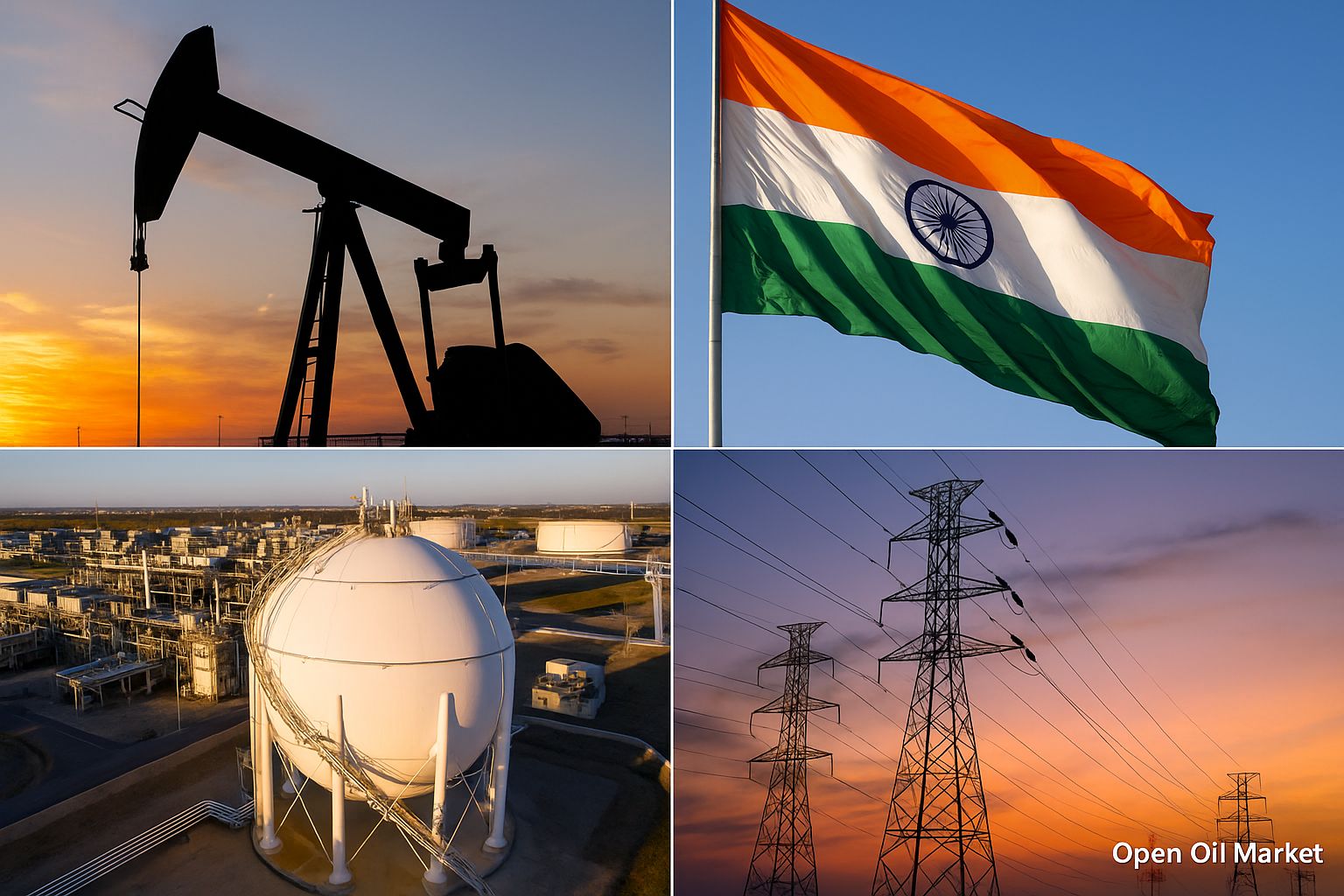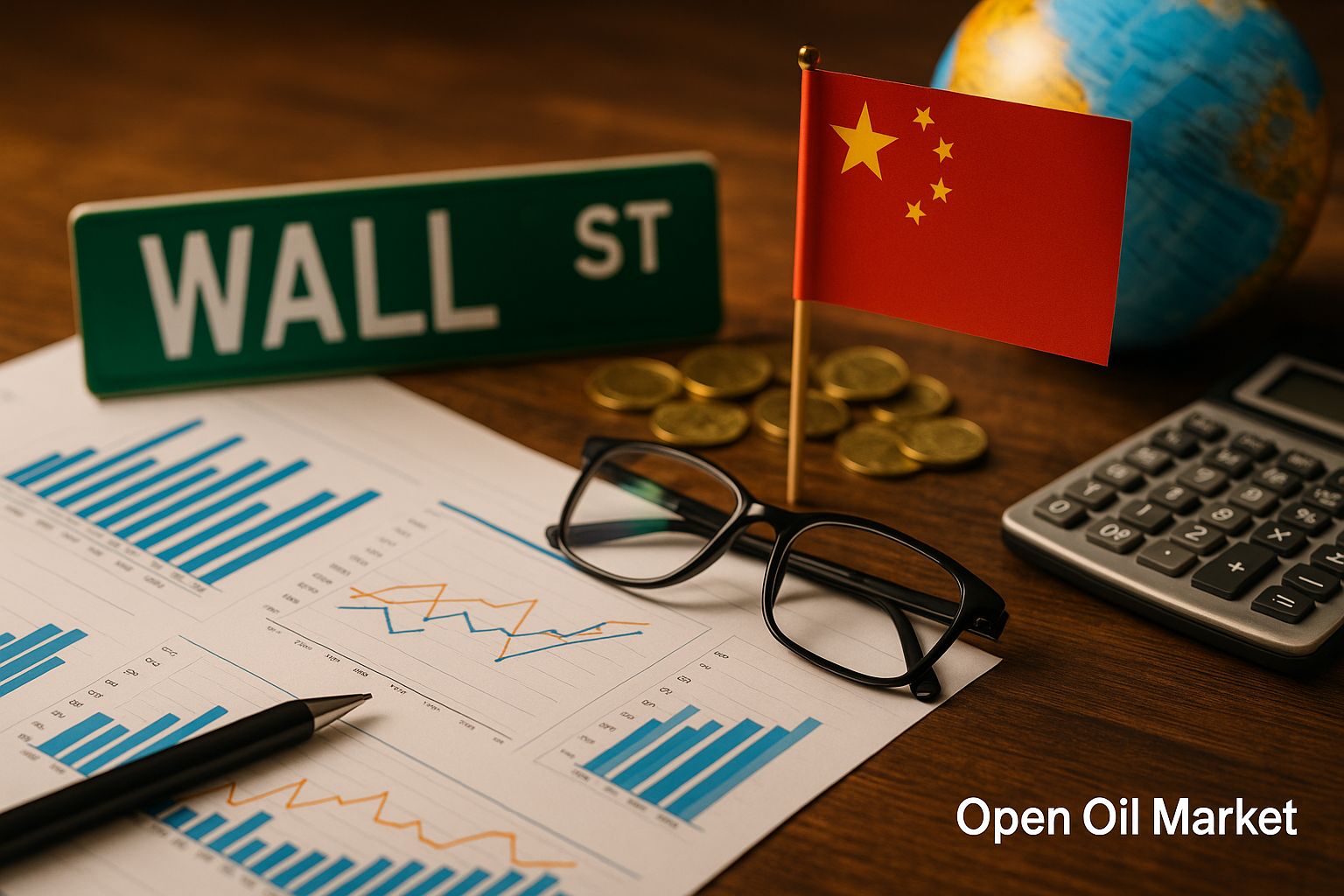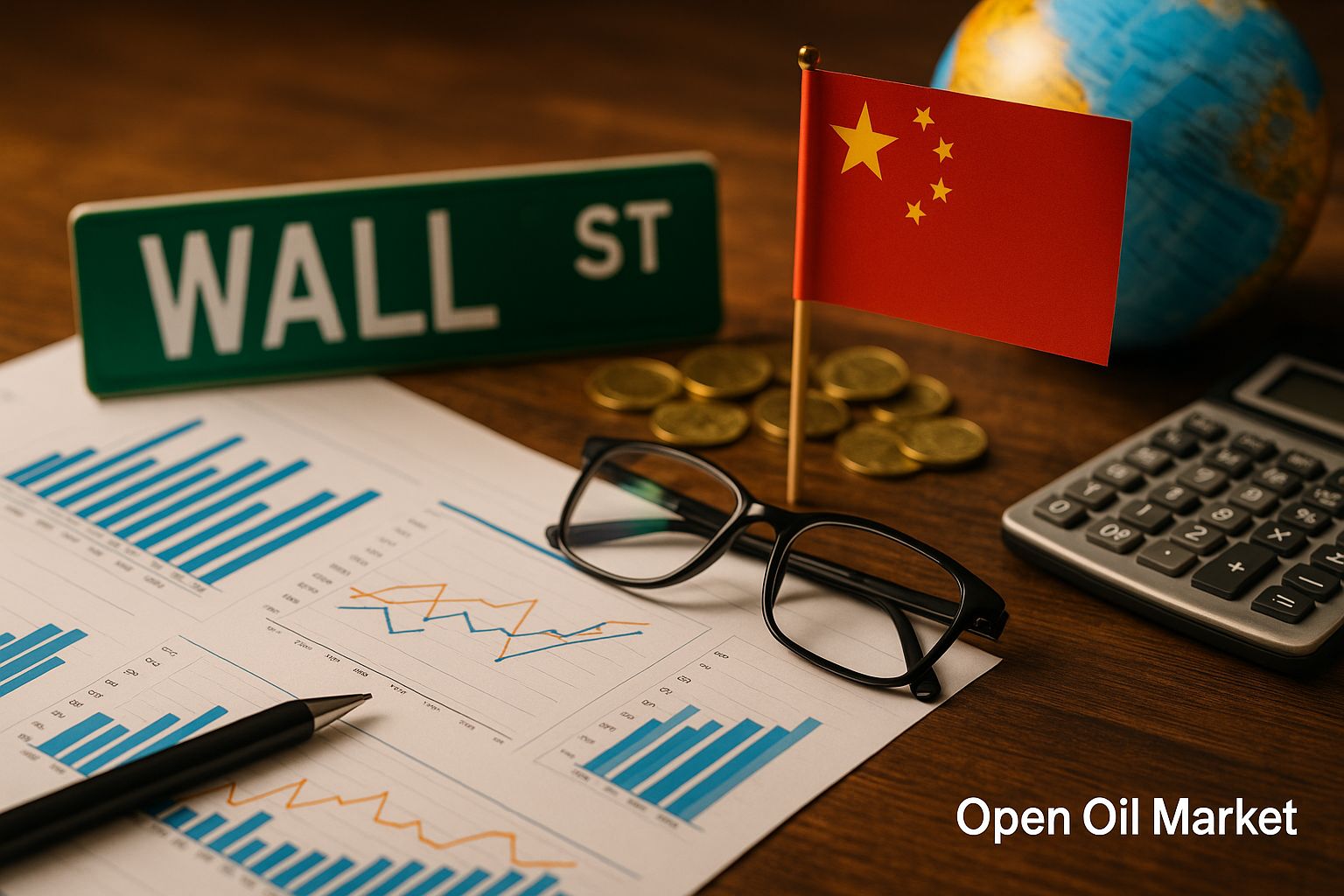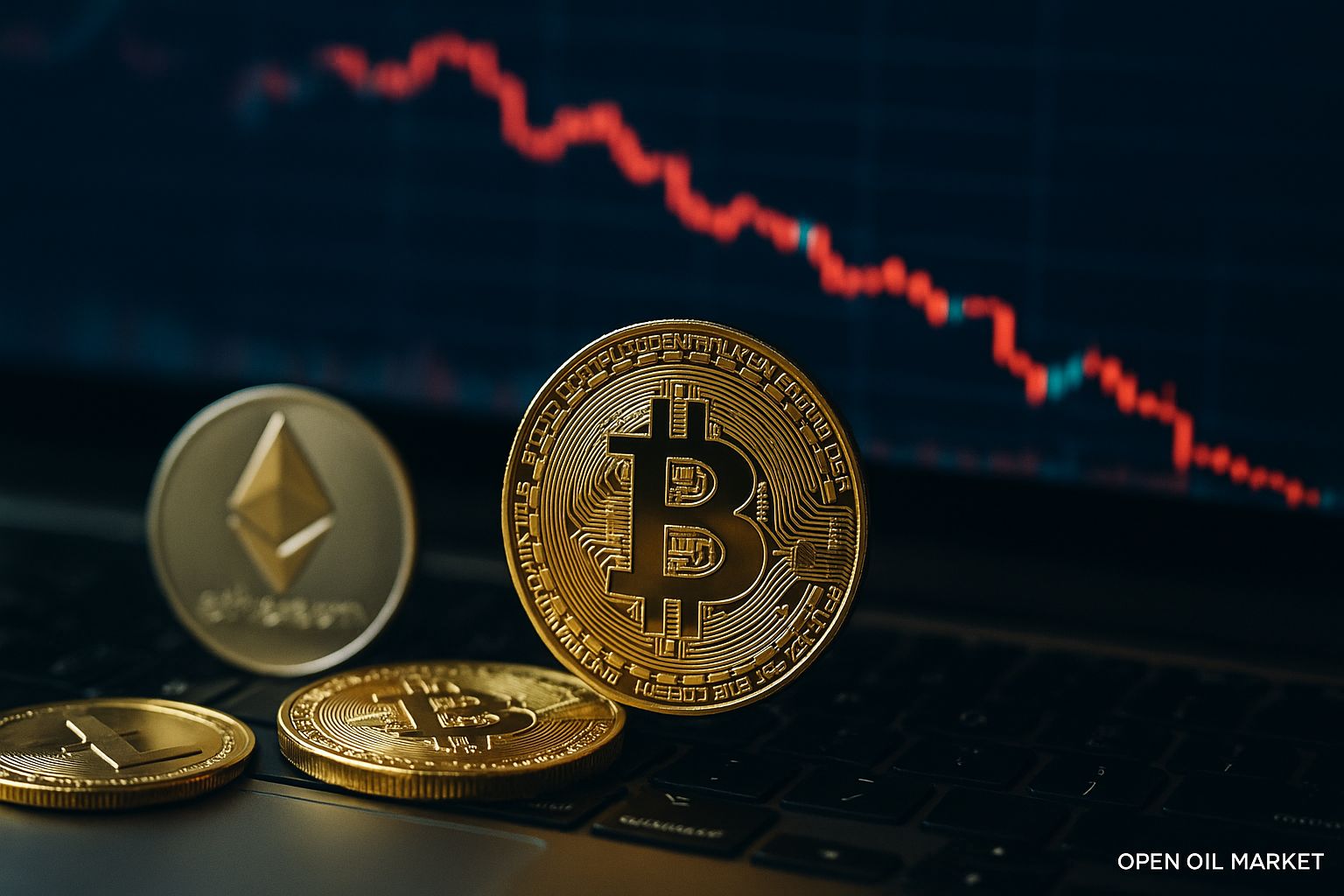
Current News in the Fuel and Energy Complex as of 18 October 2025: Analysis of Global Oil, Gas, Coal, Electricity, and Renewable Energy Markets. Sanctions, Export Reorientation, the Domestic Fuel Market in Russia, and the Outcomes of REN-2025 Forum.
By mid-October 2025, the global fuel and energy complex is experiencing a relatively stable yet contradictory situation. Oil prices remain near multi-month lows due to anticipated supply surpluses by year-end; however, geopolitical tensions persist. The sanctions conflict between Russia and the West is intensifying: this week, the UK imposed new restrictions against major Russian oil and gas companies, while the US urges allies to completely shun imports of Russian energy resources. A surprising development was India's announcement of its readiness to gradually halt purchases of Russian oil—if this is realised, global oil flows will be significantly realigned. Meanwhile, Europe heads into winter with unprecedented natural gas reserves, ensuring price stability in fuel markets unless extreme cold occurs. The global energy transition is gaining momentum: record investments in renewable energy are being observed, although traditional resources still underpin the energy system. In Russia, emergency measures to stabilise the domestic fuel market are proving effective—gasoline shortages are diminishing, wholesale prices are retracting from peak levels, although the situation in remote regions still requires attention. Central to industry discussions was the recently concluded International Forum "Russian Energy Week 2025" (15-17 October), where key topics included securing the domestic energy resource market and reorienting exports under new sanctions conditions. Below is a detailed overview of the main news and trends from the oil, gas, electricity, and raw materials sectors on 18 October 2025.
Oil Market: Sanction Pressure, Indian Factor, and Supply Surplus
Global oil prices continue to remain depressed. The benchmark Brent is trading at around $61-62 per barrel, while American WTI is within the range of $58-59. This is close to minimum levels since the beginning of summer and reflects expectations of an oil surplus in the market by the fourth quarter. A slight increase in prices in September has given way to a decline—traders are factoring in a scenario where supply will exceed demand by year-end. However, the latest news is adding new variables to the oil market:
- Surplus and subdued demand. The oil alliance OPEC+ continues to pursue a policy of gradual production increases. At the meeting on 5 October, key countries confirmed an increase in the collective quota by approximately +130,000 barrels per day starting in November, continuing their cautious restoration of lost market shares. Simultaneously, non-OPEC countries, particularly the US and Brazil, are ramping up production, closely approaching record levels. Demand for oil is growing slower than anticipated: the International Energy Agency has lowered its forecast for consumption growth in 2025 to around 0.7 million barrels per day (down from over 2 million in 2023), citing economic slowdowns in Europe and China and the effects of previous high prices. As a result, commercial oil inventories worldwide are increasing, putting further downward pressure on prices.
- Sanctions and geopolitics. Western sanctions remain a significant source of uncertainty. In mid-October, the UK announced sanctions against Russia's largest oil and gas companies (including Rosneft and Lukoil), tightening industry restrictions. Washington is urging partners to adopt a stricter approach—up to and including a complete ban on purchasing Russian oil and intercepting bypass schemes via a "shadow" tanker fleet. Additionally, military risks are exerting pressure on the Russian fuel and energy complex: Ukrainian drone attacks on oil infrastructure have surged recently. This week, facilities in Saratov Oblast and Bashkortostan were damaged, leading some refineries to suspend operations. In response, Russian authorities announced the postponement of planned repairs at refineries to maximize market saturation—these steps are aimed at preventing fuel shortages both domestically and in export routes. Overall, the combination of sanction pressure and military threats increases volatility: any new tightening or unforeseen circumstances could reduce available supplies and provoke price spikes.
- India's shift away from Russian oil. India's role as the largest importer of Russian oil has signaled a potential rethink of its energy policy. According to the US President, Indian leadership has promised to gradually halt purchases of Russian oil, which accounted for about one-third of India’s imports. Officially, New Delhi states that its priority is stable prices and reliable supplies; however, the mere discussion of such a step has stirred the market. Should India indeed cut its imports from Russia, Moscow will have to redirect vast volumes to other markets or reduce production. On one hand, India's exit from Russian barrels will amplify pressure on Russia's exports and potentially heighten budgetary risks. On the other hand, it will remove a major consumer of Russian raw materials from the global market: competitors from the Middle East, Africa, and America will replace the declining volumes, altering trading flows in the long term. News from India has temporarily supported oil prices above recent lows as market participants anticipate reduced supply from Russia. Analysts note that this combination of geopolitical factors will prevent prices from falling significantly below current levels—the $60 per barrel mark for Brent is now viewed as a sort of market “floor” that is limiting further declines.
Overall, the oil market is balancing between fundamental pressures and political risks. The supply surplus is preventing prices from gaining upward momentum, but sanctions and potential market reshuffles (such as India’s withdrawal from Russian supplies) are also keeping prices from plunging deeply. Companies and investors are acting cautiously, considering the likelihood of new disruptions—from tightening sanctions to heightened conflicts. The base scenario for the upcoming months suggests moderately low prices will persist amid an oil surplus in the global market.
Natural Gas: Record Stocks, Low Prices, and Eastern Export Reorientation
The gas market has established comfortable conditions for consumers, particularly in Europe, as winter approaches. The European Union enters the winter season with record-high stock levels: underground gas storage across the EU is filled to over 95% on average—significantly higher than last year’s levels. Thanks to mild autumn weather and high liquefied natural gas (LNG) import volumes, Europeans have accumulated the necessary reserves well ahead of schedule without panic buying. Wholesale gas prices remain relatively low: the key TTF index in the Netherlands has stabilised around €30-35 per MWh, significantly below the peaks of autumn 2022. The risk of a recurrence of last year's gas crisis has noticeably diminished, although much will depend on winter weather conditions and the stability of LNG supplies.
- Europe's rejection of Russian gas. EU countries continue to reduce their dependence on Russian gas. Direct pipeline supplies from Russia have fallen to minimal volumes and are only sustained by a few nations under long-term contracts (for example, Hungary). Over the past two years, Russia's share in EU gas imports has decreased from approximately 40% to less than 15%. Additional measures are being discussed in Brussels: the proposed 19th sanctions package includes a ban on Russian LNG purchases by 2026-2027, legally formalising the complete rejection of energy sources from Russia in the medium term. Already, the primary resources for Europe have become imported LNG from around the globe, along with increased pipeline supplies from Norway, North Africa, and Azerbaijan.
- Eastern pivot in gas. Having lost the European market, Russia is increasing gas exports towards the east. Gas flows through the “Power of Siberia” pipeline to China continue to rise and could reach record levels of approximately 22 billion m3 in 2025, nearing the pipeline's design capacity. Concurrently, Moscow is negotiating the construction of a second line of the pipeline through Mongolia (“Power of Siberia 2”), the launch of which by the end of the decade will partially compensate for the lost European volumes. Additionally, Russia is boosting LNG exports: new liquefaction capacities have been brought online in Yamal and the Far East. Additional batches of Russian LNG are being directed to India, China, Bangladesh, and other Asian countries willing to purchase gas at competitive prices. Nevertheless, Russia's total gas exports remain below pre-sanction levels—largely because the current priority for Russian authorities is the domestic market and meeting the needs of CIS allies.
Thus, the global gas sector heads into winter in a relatively balanced state. Europe has a solid "safety cushion" in case of cold weather, although price spikes cannot be entirely ruled out. Simultaneously, global gas trade flows have drastically changed: the EU has virtually abandoned Russian gas, while Russia has pivoted eastward. Investors are closely monitoring the situation—from the pace of new LNG project launches globally to negotiations over new gas supply routes. For now, moderate demand and high levels of reserves are benefitting importers, keeping fuel prices at a reasonable level.
Electric Power: Record Consumption and Network Modernisation
Global electricity consumption in 2025 is confidently moving toward new historical highs. Economic growth, digitalisation, and the mass adoption of electric vehicles are driving demand for electricity across all regions of the world. According to analysts, global electricity production is expected to exceed 30,000 TWh for the first time in a year. The largest economies are primarily contributing to this record: the US is expected to consume around 4.1 trillion kWh (a new record for the country), while China is projected to exceed 8.5 trillion kWh. Energy consumption is also rapidly growing in developing countries in Asia, Africa, and the Middle East due to industrialisation and population growth. Such rapid demand growth places new demands on infrastructure:
- Network load. The increase in electricity consumption necessitates proactive modernisation of the electricity grid. Many countries have announced large-scale investment programmes for updating and expanding networks, as well as for constructing new power plants—to prevent power shortages and outages during peak loads. For example, in the US, energy companies are investing billions of dollars in strengthening distribution networks in response to increased loading from data centres and electric vehicle charging stations. Similar projects to reinforce energy networks are being carried out in Europe, China, and India. Concurrently, smart grid and energy storage systems are gaining importance: industrial battery farms and pumped storage plants help smooth peak loads and integrate the growing varying generation from renewable sources. Without infrastructure upgrades, energy systems will struggle to reliably meet the record demand of the coming decades.
Overall, the electricity sector demonstrates resilience, providing energy to the economy even at record consumption levels. However, maintaining supply reliability requires continual investments in networks, generation, and innovation. Many governments view electricity as a strategic sector, investing in its development despite budgetary constraints, as the stability of electricity supply is critical for the functioning of all other segments of the economy.
Renewable Energy: Investment Boom, Government Support, and New Challenges
The renewable energy sector continues its rapid growth in 2025, solidifying the global trend towards the "green" transformation of the fuel and energy complex. Investments in solar and wind energy are hitting records: it is estimated that approximately $400 billion was invested globally in renewable energy projects during the first half of 2025—10-12% more than in the same period the previous year. These funds are primarily directed towards the construction of new solar and wind power plants, as well as the development of related technologies—energy storage systems, digital management platforms, etc. The rapid commissioning of new capacities is already reflected in the energy balance: clean electricity generation is increasing without a rise in carbon emissions.
- Record generation and share of renewables. Renewable sources are taking an increasingly significant share of the global energy balance. Current data indicates that around 30% of electricity generation globally is provided by solar, wind, hydropower, and other renewables. In the European Union, this figure has already exceeded 45% due to active climate policies and the closure of coal-fired power plants. China is approaching the threshold of 30% generation from renewables, despite the vast scale of its energy system and the ongoing construction of new coal plants. For the first time in 2025, the global volume of electricity produced from solar and wind exceeded that generated from coal—an important symbolic milestone for global energy.
- Government support and incentives. Governments of major economies are intensifying support for "green" energy. In Europe, more ambitious climate targets are being adopted, requiring accelerated introduction of clean capacities and development of emissions trading. In the US, large subsidy and tax incentive programmes for renewable energy and related sectors are being implemented (as part of the Inflation Reduction Act). In CIS countries, there is also a ramping up of renewable energy promotion: Russia and Kazakhstan are holding competitions to select new solar and wind projects with government support, while Uzbekistan is building large solar parks in the deserts. This incentivising policy aims to reduce industry costs and attract additional investments, accelerating the transition to clean energy.
- Growth challenges. The rapid development of renewables is accompanied by challenges. High demand for equipment and raw materials is leading to increased costs for components: for instance, prices for polysilicon used in solar panels and rare earth materials for wind generators have remained high in 2024-2025. Energy systems are facing the need to integrate variable generation—new energy storage solutions and flexible backup capacities are required to balance the grid. Additionally, some countries experience a shortage of qualified personnel and grid capacity capable of assimilating the increasing generation from renewables. Regulators and companies will need to address these issues to maintain high rates of the "green" transition without compromising supply reliability.
Renewable energy has become an integral part of the global energy landscape, attracting significant financial resources. The sector awaits further expansion—as technology costs decline, the share of clean energy will continue to increase, and innovations (such as more efficient batteries or hydrogen projects) will open new opportunities. For investors, renewables remain one of the most dynamic sectors, although it is crucial to account for market risks related to material supplies, regulation, and infrastructure constraints when implementing projects.
Coal Market: High Demand in Asia and Long-Term Exit from Coal
The global coal market in 2025 exhibits mixed trends. On one hand, there remains high demand for coal in Asian countries—particularly for power generation during peak loads. This summer saw a spike in the importation of thermal coal in East Asia: in August, China, Japan, and South Korea collectively increased purchases by nearly 20% compared to the previous month. In China, a temporary tightening of environmental checks and safety requirements led to a reduction in coal production at some mines, while industrial electricity consumption was rapidly growing. The shortfall in generation was compensated by increased coal imports, which propelled regional prices upwards: prices for Australian Newcastle coal exceeded $110 per tonne (the highest in the last 5 months). Similarly, India and several other developing economies have increased coal usage to support energy systems during periods of peak summer demand. Thanks to coal, many Asian countries were able to avoid outages and meet rising consumption needs.
On the other hand, the long-term outlook for the coal industry remains negative. More and more countries are adopting policies to phase out coal in order to combat climate change and reduce emissions. In the European Union, the share of coal generation has fallen below 10% (down from approximately 15% a few years ago), and 11 EU countries aim to close all coal power plants by 2030, replacing them with gas and renewable capacities. In the US, market conditions also work against coal: cheap natural gas and the rapid growth of renewables continue to push coal out of the energy mix, despite some supportive measures for the coal industry. Even countries traditionally reliant on coal are reducing their usage: for example, Germany, after a temporary increase in coal consumption in 2022-2023, has once again reduced output from coal power plants in 2025. Coal prices in global markets are, on average, significantly lower than last year—during the first half of 2025, export prices from major coal hubs dropped by 25-30%, reflecting reduced demand outside of Asia.
- Russian coal exports. For Russia, which ranks among the top three coal exporters globally, these trends mean a shift in focus towards eastern markets. Following the EU embargo in 2022, domestic coal companies have redirected supplies from Europe to the Asia-Pacific region. Currently, over 75% of Russian coal exports are directed to China, India, Turkey, and other Asian countries. This demand partially compensates for the loss of the European market; however, trade over long distances requires offering significant discounts to buyers and increases transportation costs. In the long run, as the pace of phasing out coal accelerates in major economies, Russian coal producers will have to adapt—seeking new buyers, developing deeper processing of coal, or shifting to domestic needs (for example, implementing "clean coal" technologies to supply energy for the growing digital infrastructure). Only by improving efficiency and flexibility under new conditions will Russian coal companies maintain competitiveness and sales volumes.
Thus, the coal sector is experiencing a sort of "swan song": short-term demand for coal in certain regions remains high, but the long-term trend is decidedly towards reducing the role of this fuel. Investors in coal are faced with a contradictory reality: on one hand, coal will still be in demand in Asia in the coming years and can yield profits; on the other hand, planning new projects is complicated by risks of losing markets for sale by 2030-2040. Focus is shifting to companies' strategies for diversifying and controlling costs, as well as to government policies that could mitigate the socio-economic impacts of the downturn in the coal sector.
Domestic Fuel Market: Stabilisation After the Crisis and Price Controls
In the second half of October, the situation in Russia's domestic fuel market has improved significantly compared to the critical September period. Following acute gasoline shortages in several regions and price spikes, authorities quickly implemented a range of measures that have begun to yield results. In most regions of the Russian Federation, motor fuel shortages have been eliminated: wholesale prices for gasoline and diesel have retracted from record levels, and independent petrol stations have resumed sales without restrictions. Nonetheless, the government continues to closely monitor the situation, especially in remote areas (the Far East, certain Siberian regions), where supplies have not yet fully normalised. To prevent a new wave of crisis, the following measures have been adopted and extended:
- Export restrictions. The export ban on automotive gasoline, introduced at the end of September, remains in effect and is extended until 31 December 2025. Similarly, restrictions on the export of diesel fuel for independent suppliers will stay in effect until year-end. These measures aim to direct the maximum volumes of petroleum products to the domestic market and satisfy domestic demand.
- Support for oil refineries and price damping. As of 1 October, the government has suspended the mechanism for zeroing fuel damping. This means that the state will continue to pay compensation to oil refineries for supplying the domestic market, even if exchange prices for fuel exceed threshold levels. This policy preserves the financial incentive to direct gasoline and diesel to petrol stations within the country. Additional incentives to increase production are also under consideration: authorities have urged refineries to postpone non-urgent repairs and ramp up crude processing in the upcoming months.
- Import and market controls. To replenish shortages in certain regions, simplification of fuel imports is being discussed. Specifically, a temporary removal of import duties on gasoline and diesel is being considered, which would allow for the possibility of attracting supplies from allies (for instance, from Belarusian refineries). Furthermore, regulatory authorities have tightened price monitoring; the Federal Antimonopoly Service has issued warnings to several major petrol station chains for unjustified price increases. The government is trying to avoid direct administrative price freezes at petrol stations, opting instead for targeted market mechanisms—such as increased damping and subsidies for fuel transporters in remote areas.
The initial results of these efforts are already tangible. By mid-October, daily output of gasoline and diesel in Russia has recovered from the late summer slump—facilitated by the completion of unplanned repairs at several refineries and the redirection of export volumes to the domestic market. In central and southern regions of the country, wholesale bases and petrol stations have rebuilt normal fuel stocks. Authorities are optimistic about navigating the upcoming winter season without serious supply disruptions. Nonetheless, the situation requires constant monitoring: the government is prepared to introduce additional measures to prevent a recurrence of the fuel crisis. On a systemic level, the question of modernising the sector is arising—developing fuel storage and delivery infrastructure, implementing digital platforms for transparent resource distribution, and enhancing the depth of domestic oil processing. These tasks were discussed in specialized sessions at the REN-2025 forum, emphasising that emergency measures alone are insufficient for long-term stability in the domestic market—comprehensive modernisation of the fuel sector is essential.
Forecasts and Prospects: Outcomes of the Forum and Risks for the Upcoming Winter
Overall, the global energy sector is approaching the end of 2025 in a state of active adaptation to new realities. The ongoing standoff between Russia and Western countries is reshaping global energy trading: gas and oil flows are being redistributed, while sanctions compel the search for alternative routes and partners. Companies in the fuel and energy complex are striving to mitigate risks—whether through reorienting exports towards Asian markets, developing self-processing of raw materials, or hedging against price fluctuations. At the same time, the global energy transition is gaining momentum: record investments in renewable energy sources and energy efficiency are forming the long-term configuration of the industry, where "green" generation plays an increasingly prominent role.
Successfully navigating the upcoming winter months poses the next challenge for energy markets. Europe will face the test of cold weather: will it manage to preserve the gas balance during potentially abnormal freezes without resuming imports from Russia? In Russia, the critical test will be the stability of domestic fuel supply: the implemented measures should prevent a new spike in shortages during winter. Additionally, the backdrop of international risks remains—ranging from geopolitical conflicts (the tense situation in the Middle East and the ongoing conflict in Ukraine) to potential emergencies such as technological accidents or natural disasters that could strike energy infrastructure.
The International Forum "Russian Energy Week 2025," which concluded on 17 October under the motto "Creating the Energy of the Future Together," served as an important platform for discussing current challenges and seeking solutions. Within the REN-2025 framework, considerable attention was devoted to securing the domestic energy resource market and exploring Russia's export potential under new conditions. The forum also hosted an energy dialogue "Russia–OPEC," along with numerous meetings with representatives from Asian and African countries. Following the forum, over a dozen cooperation agreements in the energy sector were signed—ranging from projects in electrical grids and renewable energy to equipment import substitution programmes for oil and gas. These agreements and established partnerships will set the tone for further reforms and investments in the sector. Russian leadership confirmed its intent to strengthen the country's position in global energy markets while ensuring reliable energy supply for its own economy.
As the new year approaches, investors and players in the fuel and energy complex are looking forward with cautious optimism. The sector demonstrates remarkable resilience in the face of unprecedented challenges—be it sanctions, logistical restructuring, or technological changes. Adaptation continues, and 2025 has become a time of significant shifts for the energy sector. We await to see how successfully the global fuel and energy complex navigates the winter months and consolidates the balance of interests achieved during this complex period. One thing can be said for certain: the fuel and energy complex is globally entering a new level of interaction and innovation, with key players ready for change, investing in the future and strengthening cooperation on the international stage.




